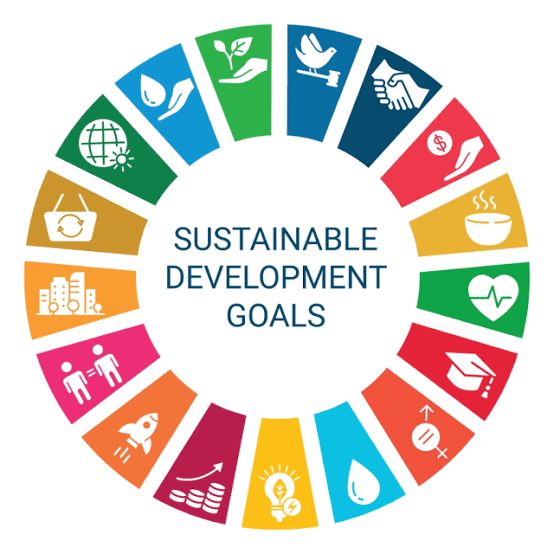INTRODUCTION
“Vidya Dadati Vinayam” conveys the profound idea that knowledge bestows humility.
India plays a key role in global climate dynamics due to its large population and diverse biodiversity, supporting the livelihoods of approximately 650 million people engaged in agriculture and forestry. Forecasts indicate a significant increase in temperature in the coming decades, which will especially affect the northern and southern regions. The fate of both India and the planet depends in part on how the Indian judiciary handles climate-related cases, which has historically spurred legislative action through high-profile court decisions. Global discussions on climate disputes, exemplified by cases such as Urgenda Foundation vs. The Netherlands, aim to raise public awareness of climate risks beyond the legal implications and stimulate policy change. These legal actions often have international ramifications, as seen in the following cases, such as the Milieudefensie trial against Royal Dutch Shell. India faces a unique climate policy challenge, balancing development needs with global climate responsibility. Domestic dialogues on climate change have shifted from diplomatic concerns to broader societal debates involving various stakeholders. Despite this commitment, India’s climate policy remains a dynamic process, reflecting ongoing discussions on the integration of climate goals with development priorities. India’s climate policy emphasizes equity and increasingly embraces “co-benefits” strategies that align development with climate goals in domestic policy discussions. However, this evolving discourse has not yet fully shaped India’s international stance on climate negotiations. In short, India is grappling with the complex challenges of climate change adaptation and mitigation while addressing both domestic imperatives and global expectations.
Driving Change: India’s Judicial Activism for Environmental Justice and Climate Action
In the area of global climate disputes, the implementation of the Paris Climate Agreement and Nationally Determined Contributions (NDCs) has led to climate-friendly legal action around the world. Courts are now better prepared to deal with environmental cases because they recognize the specialized nature of environmental law requiring expertise among lawyers and judges. India has shown empathy towards its citizens and activism in addressing legal issues that have been neglected by the legislature. The Indian judiciary has a history of involvement in public interest litigation, including high-profile cases related to climate change. This judicial activism has been facilitated by more flexible standing rules that allow continuous monitoring of the implementation of decisions. According to Justice Krishna Iyer of the Supreme Court of India, judicial activism is necessary when lawmakers are slow to respond to societal needs. Addressing societal needs has necessitated the expansion of the traditional concept of standing to include public interest litigation, thereby making the judicial process more accessible and democratic. In public interest litigation, court decisions affect not only the parties involved but also other persons in similar circumstances. Public interest litigation has enabled the courts to address various social problems, particularly in cases where political will is lacking or legislative action is delayed. The Indian judiciary has taken an activist approach, especially when it comes to environmental issues, by creatively interpreting legal principles, both domestic and international. For example, the judiciary has upheld the right to a healthy environment as a fundamental right under Article 21 of the Constitution and ordered private sector organizations to take measures to protect the environment and reduce pollution. In landmark cases, the Supreme Court of India has emphasized the importance of sustainable development and conservation for the benefit of present and future generations and emphasized the need to balance economic growth and environmental protection. This proactive attitude underscores the judges’ commitment to environmental justice and the preservation of resources for future generations.
Equity and Evolution: India’s Climate Politics on the Global Stage
The initial arrangement of India’s climate policy has remained remarkably consistent, shaping a stable approach to negotiations over two decades. Influenced by global dynamics, this attitude also influenced domestic climate policy, viewing climate change as a global issue between developed and developing countries. India used international platforms to hold industrialized countries to account, while internally climate change was considered less important in policy discussions. Ateridge attributes this consistency in part to specific individuals—senior bureaucrats operating somewhat independently—and to a prevailing emphasis on justice. However, this explanation alone does not fully explain the intransigence of India’s climate policy. Understanding the enduring public support for the justice framework (or the absence of active dissent) requires further investigation. Adoption of the equity framework has been widespread over the two decades of the UNFCCC process. This consensus also extends to technical and professional participants in global climate debates, despite their understanding of climate impacts. Experts often consider participation in international assessments unnecessary because they believe that industrialized countries should be responsible for negotiations. The dominant framing of climate change as a global problem that ignores historical responsibility further alienates Southern researchers who view the problem through the lens of justice. Additionally, Indian environmental activists have historically been skeptical of the climate agenda, viewing it as a diversion from local environmental concerns. Beyond individual influences, the equity framework and its supporting arguments resonate strongly across various segments of Indian society, particularly among those actively shaping climate policy. However, in recent years, divergent views have emerged within this relatively unified political stance due to significant shifts in global climate negotiations and India’s evolving geopolitical position. These shifts interact with domestic changes, leading to more nuanced articulations of the justice framework without changing its core principles. The period around the 2009 Copenhagen COP saw India adopt emissions commitments and a National Climate Change Action Plan, reflecting subtle shifts in climate policy. While India has made notable statements and implemented domestic programs, major changes in domestic climate change policy remain subtle and contested. The evolving climate debate in India reflects a complex interplay of global and domestic factors shaping different perspectives and strategies across political and societal sectors.
Environmental Justice through the National Green Tribunal
The establishment of the National Green Tribunal (NGT) in India under the National Green Tribunal Act of 2010 marked a pivotal step towards the efficient handling of environmental protection and conservation cases. Unlike traditional courts, NGT benches integrate judges and expert members to provide comprehensive legal and scientific analysis of environmental issues. Over the past decade, the NGT has played a crucial role in prioritizing environmental concerns within the Indian judicial system. Despite encountering challenges such as limited jurisdiction, execution powers, and statutory constraints, the NGT has streamlined procedural complexities in environmental legal matters. It has significantly contributed to developing impactful environmental jurisprudence, often drawing inspiration from and expanding upon international environmental law principles. The NGT’s proactive approach underscores its commitment to delivering environmental justice and highlights its role in advancing sustainable development initiatives in India.
Transforming India’s Climate Policy: Navigating Challenges and Embracing Cobenefits
The evolution of India’s climate policy reflects a shift towards a co-benefits framework, evident in recent government initiatives such as the National Action Plan on Climate Change (NAPCC), which includes several national missions aimed at integrating climate change mitigation and adaptation in various sectors. These missions, covering solar power, water conservation, energy efficiency, agriculture, and habitat sustainability, underline a broad policy landscape that has drawn both praise and criticism for its scope and approach. Critics of the NAPCC point to perceived shortcomings in the vision and commitment to equity, yet specific missions, such as solar and energy efficiency, have demonstrated tangible impacts, reduced solar costs, and set goals to improve energy efficiency. Despite criticism, these initiatives have spurred significant action and debate, reshaping India’s energy landscape. In addition, state-level efforts under State Action Plans on Climate Change (SAPCC) focus on strengthening the coherence and implementation of climate action, although challenges remain in integrating climate into broader development frameworks. Looking ahead, India’s climate governance faces governance hurdles due to its federal structure and financial constraints that require greater coordination across government levels to translate climate goals into effective policy. While the path to low-carbon development remains complex and evolving, India’s policy trajectory signals a proactive stance, combining top-down national efforts with decentralized state initiatives, underscoring the multi-stakeholder governance necessary to deliver sustainable climate action.
CONCLUSION
India’s environmental jurisprudence has evolved through judicial creativity and activism, guided by constitutional principles that transcend legislative boundaries to recognize and protect rights. Notable cases like Vishaka have prompted the passage of specific laws in response to emerging problems. Fundamental rights to the environment, including protection from pollution, are enshrined in the Constitution of India. However, the judiciary has faced challenges in quantifying the carbon footprint and assessing climate change-related damages due to insufficient scientific evidence. The next decade will be crucial for defining climate rights for future generations in India, a major producer of carbon dioxide and a rapidly growing population. India’s climate policy has historically revolved around geopolitical considerations and contributed to a global equitable framework in climate negotiations. Despite calls for greater global and domestic action, the principle of justice remains central. Domestically, discussions have expanded to include issues of equity, climate adaptation, and the intersection of energy security and climate change. The adoption of a co-benefits approach that links climate action with energy security has spurred domestic energy efficiency and renewable energy efforts, with associated climate benefits. As India moves towards a more comprehensive domestic climate policy, significant governance challenges arise. Integrating climate adaptation into sectors such as water and agriculture within India’s federal administrative structure requires careful coordination. This evolving complexity indicates a deepening commitment to climate issues, shaping India’s domestic climate discourse and influencing its global climate stance.
REFERENCE
- Dubash, N. K. (2013). The politics of climate change in India: narratives of equity and cobenefits. Wiley Interdisciplinary Reviews: Climate Change, 4(3), 191-201.
- Dubash, N. K. (2012). Handbook of climate change and India. Oxford University Press.
- Sathaye, J., Shukla, P. R., & Ravindranath, N. H. (2006). Climate change, sustainable development and India: Global and national concerns. Current science, 314-325.
- Chattopadhyay, N., & Hulme, M. (1997). Evaporation and potential evapotranspiration in India under conditions of recent and future climate change. Agricultural and Forest Meteorology, 87(1), 55-73.
- Narain, S., Ghosh, P., Saxena, N. C., Parikh, J., & Soni, P. (2015). Climate change: perspectives from India (No. id: 7941).
TASK- LEGAL ARTICLE
Author- VAIBHAV SINGH




